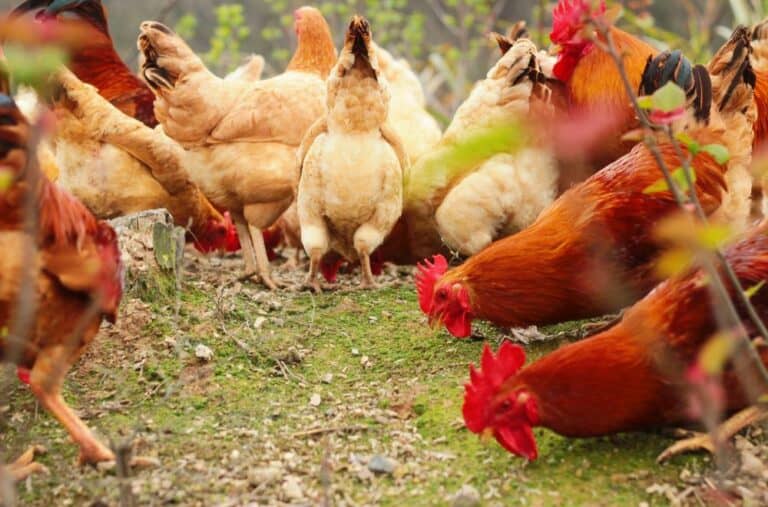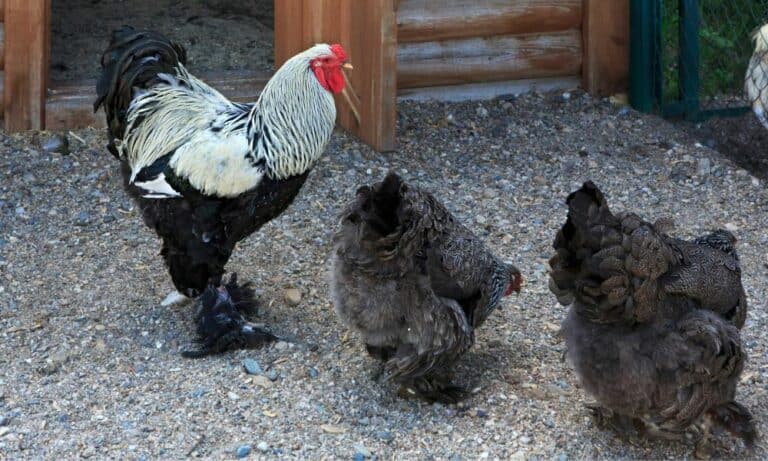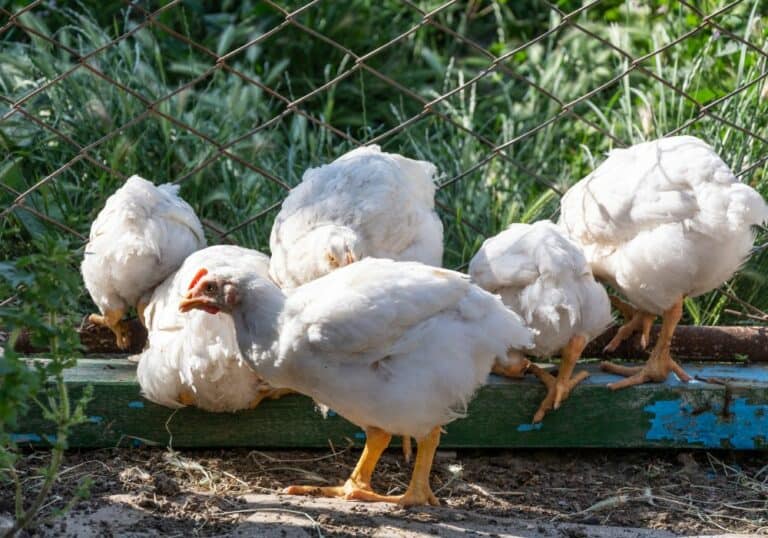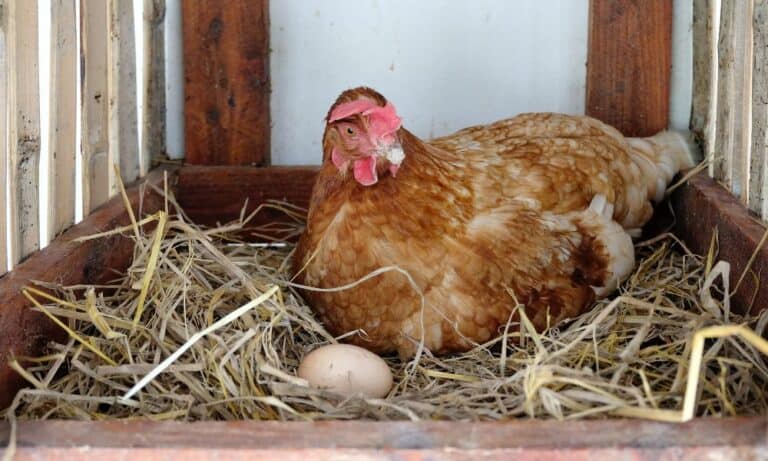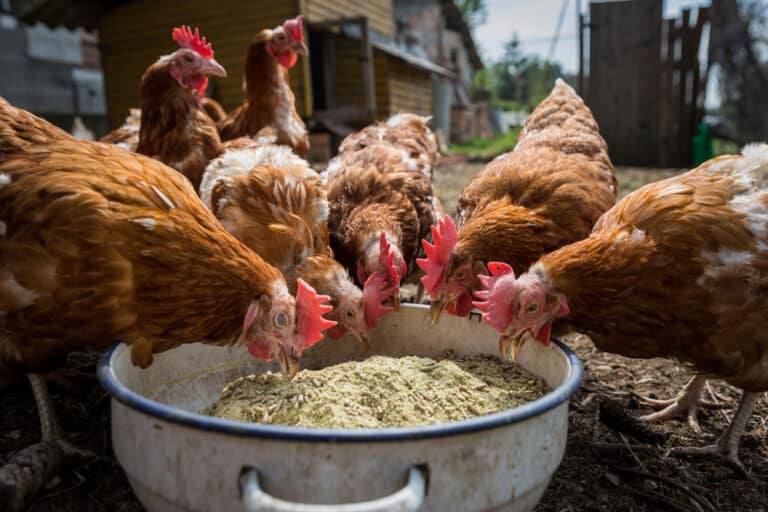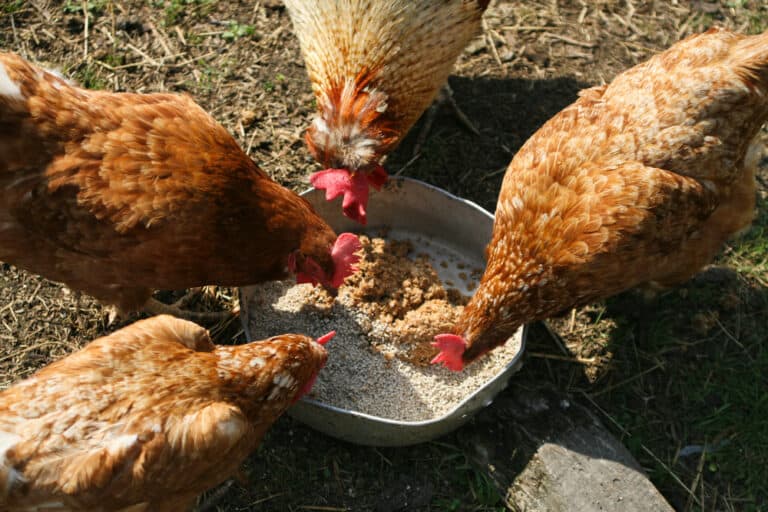The Shamo chicken is one of the most interesting in the world. Hailing from Japan, these huge chickens were once bred for cockfighting but have now become a beloved members of many backyard flocks.
But what are these chickens used for and is a Shamo chicken right for you? Thankfully we have all the answers here! All you need to do is read on and enjoy our complete guide to the Shamo chicken.
History and Origin of Shamo Chicken
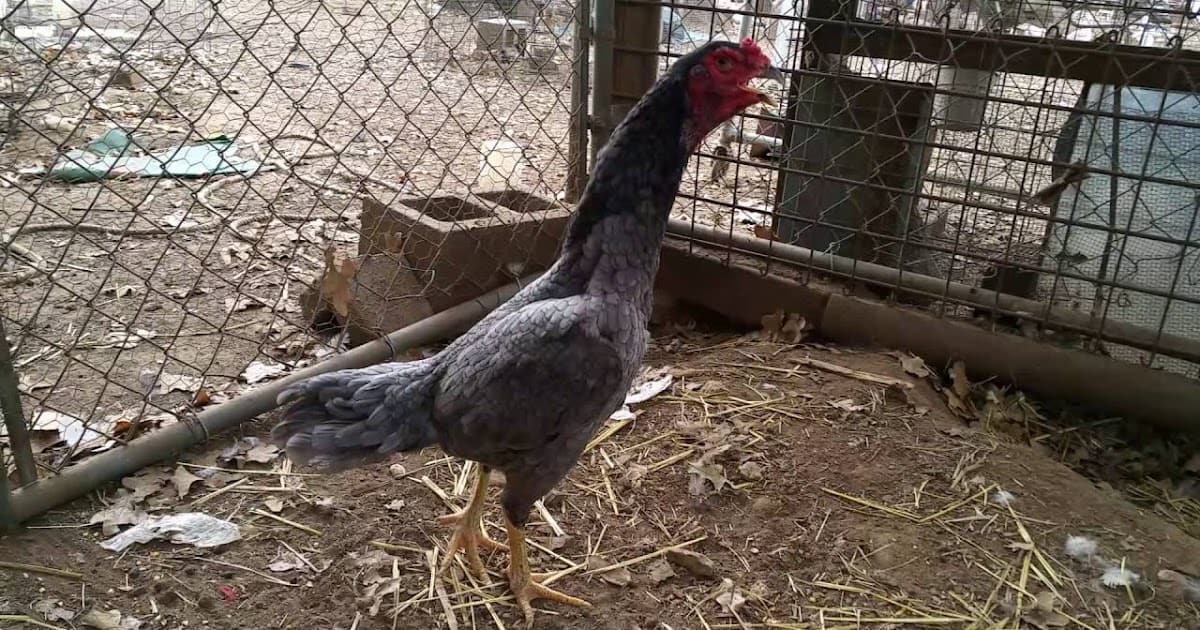
Before we get started, we should clear up that Shamo is not a breed of chicken. Instead, Shamo is a collective name that the Japanese gave for a group of chickens that all share similar ancestry, appearance, and characteristics.
There are seven varieties of this chicken, which are:
- Ehigo-Nankin-Shamo
- O-Shamo
- Kinpa
- Ko-Shamo
- Nankin-Shamo
- Yakido/Ygido
- Yamato-Shamo/Yamato Gunkei
However, these varieties are very similar in terms of their appearance, behavior, use, and characteristics. Due to this, for the rest of the article, we’ll be talking more generally about Shamo chickens.
The Shamo chicken is native to Japan and has been bred there for over 300 years. The first Shamo chickens were initially bred for cockfighting. However, cockfighting was outlawed in Japan just after the end of the Second World War.
These days Shamo chickens are bred for exhibition shows and as pets. As there is very little use for this chicken other than exhibitions, they have become extremely rare and are at risk of becoming endangered.
Physical Characteristics of Shamo Chicken

As they were initially made for fighting, they have been bred to have an imposing size along with a high level of strength. This makes them much bigger than your average chickens. With their long necks and upright posture, they look more like vultures.
They stand tall and can often reach well over 70cm in height. Along with that upright position, they have a broad chest which further adds to their imposing look. Added to this, these are not fluffy birds and have short feathers that are held tightly against their body.
This helps to give the Shamo an athletic and muscular appearance. They have other distinctive features too, such as having a very small wattle, accentuating their broad jawline. When you add that to its large deep red comb, everything about this bird looks aggressive.
Their weight will depend on the specific breed you have, but most hens will grow to be around 7 lbs. Roosters can get to a very imposing 11 lbs.
Uses of a Shamo Chicken
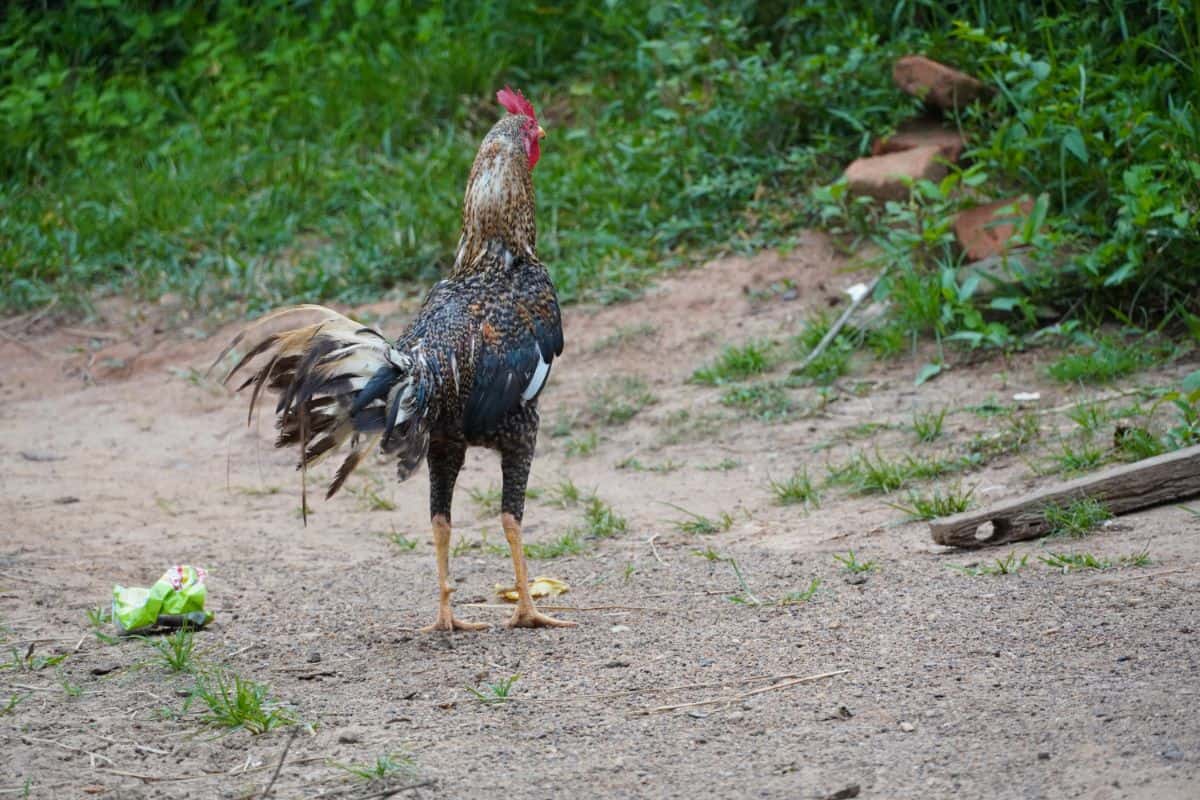
Now we know a little more about the Shamo chicken, what are they used for? Thankfully they aren’t used for cockfighting in Japan or the USA anymore, but why would you keep this aggressive chicken? Let’s investigate.
1. Meat
Shamo chickens are not used for their meat. While these chickens are tall, they are slender which means there isn’t much meat on them.
More importantly than that, the meat just doesn’t taste great. These chickens have tough meat which doesn’t have a lot of flavor. If you were hoping to partly raise this chicken for their meat, then it’s best to look elsewhere.
2. Eggs
Eggs are a non-starter too. They are everything you don’t want in a layer. They only make around 90 eggs per year, and they are medium in size. For comparison, a great layer can lay over 300 large eggs per year.
They are also broody, which is a quality you don’t want in an egg layer. This means they want to sit on their laid eggs and raise their chicks, and they can get aggressive if you try to claim their eggs.
However, one advantage is that you have other breeds of chickens that don’t have broody hens. You can often get the Shamo chicken to sit on the eggs of other chickens and she’ll raise them as her own. But the bottom line is that it’s almost pointless to keep Shamo chickens if you want their eggs.
3. Pets
You can probably appreciate now why these chickens may become endangered. But while not good for meat or eggs, many like keeping them for their distinctive appearance and personality.
There are still many exhibition shows where people like to show off their beautiful chickens and that helps to keep the Shamo chickens popular. Along with this, they can also be a good idea for a pet in the right circumstances.
While bred for their aggression, these chickens are rarely aggressive toward humans. In fact, the hens are generally seen as both docile and friendly. If raised from birth, they can make a great backyard companion.
A Shamo chicken isn’t one that you’re going to pick up and pet. Instead, they are ideal pets for those who admire these birds for their striking appearance and intriguing personality. These intelligent and inquisitive animals are much more stimulating to watch than other types of chicken.
The roosters can be a little more aggressive, and you shouldn’t keep two of them together unless you have a large abundance of hens. Even then, the roosters can end up fighting.
Are they good with small children? By now you probably know the answer to that. The possibility of them being aggressive means it’s a no. However, if you have a fearless older child who loves animals, then you can end up with a loyal pet.
You can almost see them in the same light as a big dog. They are powerful, confident, love to roam, and are happy to spend time with their owners. While you need to be cautious, especially in the first few months, they can develop into great pets.
Feeding and Housing Shamo Chickens
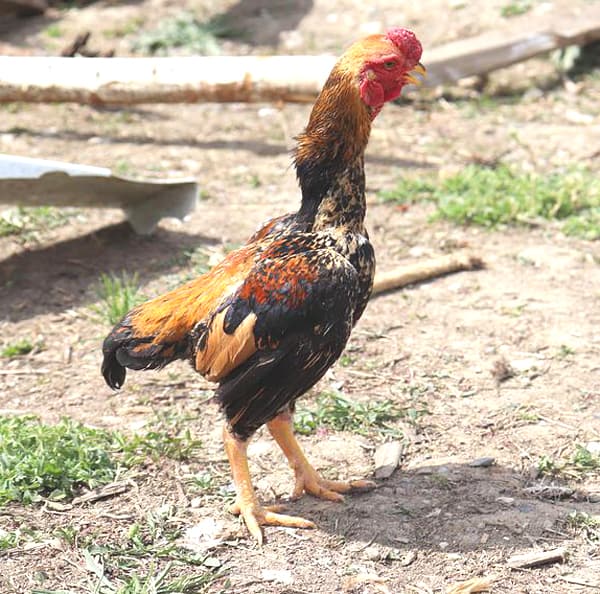
With enough space, Shamo chickens are easy to keep. They are a hardy group of chickens, which means they can easily withstand colder winters and hot summers. Let’s look at how to care for these beautiful chickens.
Coop
Large chickens require a lot of room. Shamo chickens need at least 10 square feet of coop space per chicken. You will also want to give them a large chicken run so they can stretch their legs throughout the day.
These are birds that don’t like to be contained and need a large area to move around. It’s best to let them be free range throughout the day but you need to ensure you have a strong and high enough fence to contain them.
As with all chickens, Shamos are sociable creatures and won’t want to live on their own. It’s best to keep them in a flock of at least three, but usually five or more. If you’re introducing a rooster, then you should have at least ten hens per rooster.
While sociable with each other, Shamo chickens aren’t too friendly with other breeds. They can often bully and be aggressive toward smaller chickens so it’s therefore best to keep them separated.
You’ll need to maintain good coop hygiene and provide them with fresh bedding. This can help prevent the likes of bacteria growth and parasites. Giving them a dust bath can also be important to prevent parasites.
Feeding
Shamo are not picky eaters and are easy to feed. As they are slower growing than most other chicken breeds, they don’t require a huge amount of protein. They will eat regular chicken pellets and also like grains and chicken mash.
With these large chickens, they are also happy to eat fresh fruit and vegetables. This means they’ll also eat your food scraps too. Before throwing out your waste fruit and veg, consider giving it to your Shamo.
Added to all this, they are also excellent foragers and will happily find their own food if they are given the space to do so. They will find insects and worms to eat, which can cut down on your feeding costs. Along with their feed, you’ll also want to provide them with a plentiful supply of fresh water.
Shamo Chicken Health and Disease Prevention
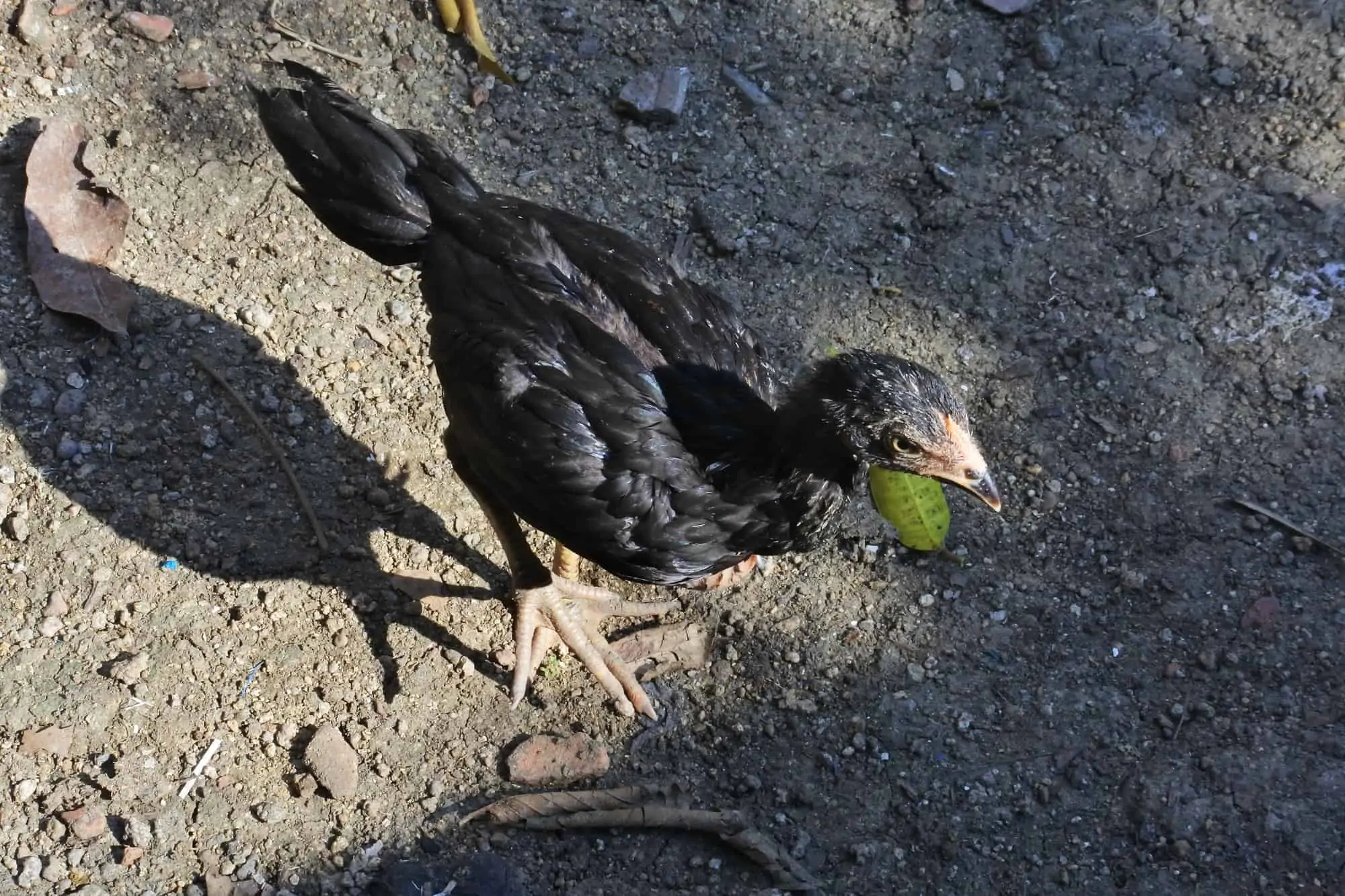
There are no known significant health issues that are commonly associated with Shamo chickens. All you need to be concerned about is the common issues that chickens have, such as mites and worms, but these can be easily treated.
You can expect your Shamo to live up to 10 years. However, there is always the chance they can get a disease before then but these aren’t common. Always be on the lookout for a change in behavior and take them to the vet if you’re concerned.
Shamo Chicken – FAQs
1. What are Shamo chickens good for?
They are good for exhibitions and as pets. There isn’t much use in Shamo chickens from a production point of view, but they can become a loyal companion.
2. Is the Shamo chicken good for meat?
No, for two reasons. Firstly, they have slender bodies which don’t hold a huge amount of meat. Secondly, their meat is known to be tough and not very tasty.
3. Are Shamo chickens rare?
They are rarer than many other chicken breeds, but they can still be fairly easy to find. Despite not being an egg or meat producer, there is still a large community of people who love keeping and breeding Shamo chickens.
4. Are Shamo chickens aggressive?
To other chickens, yes. To humans, no. Roosters will often attack each other, and hens can bully other chicken breeds. But aside from that, they can become very friendly to humans and can become loyal companions.
Conclusion
There is no doubt that the Shamo is one of the most interesting chickens in the world. Originally bred for cockfighting, they have become a common sight at poultry exhibitions and can become loyal pets.
If you’re interested in keeping Shamo chickens, then make sure to follow our advice above. If you give them space to roam and a calm environment, you’ll have a beautiful chicken that is a pleasure to keep.

